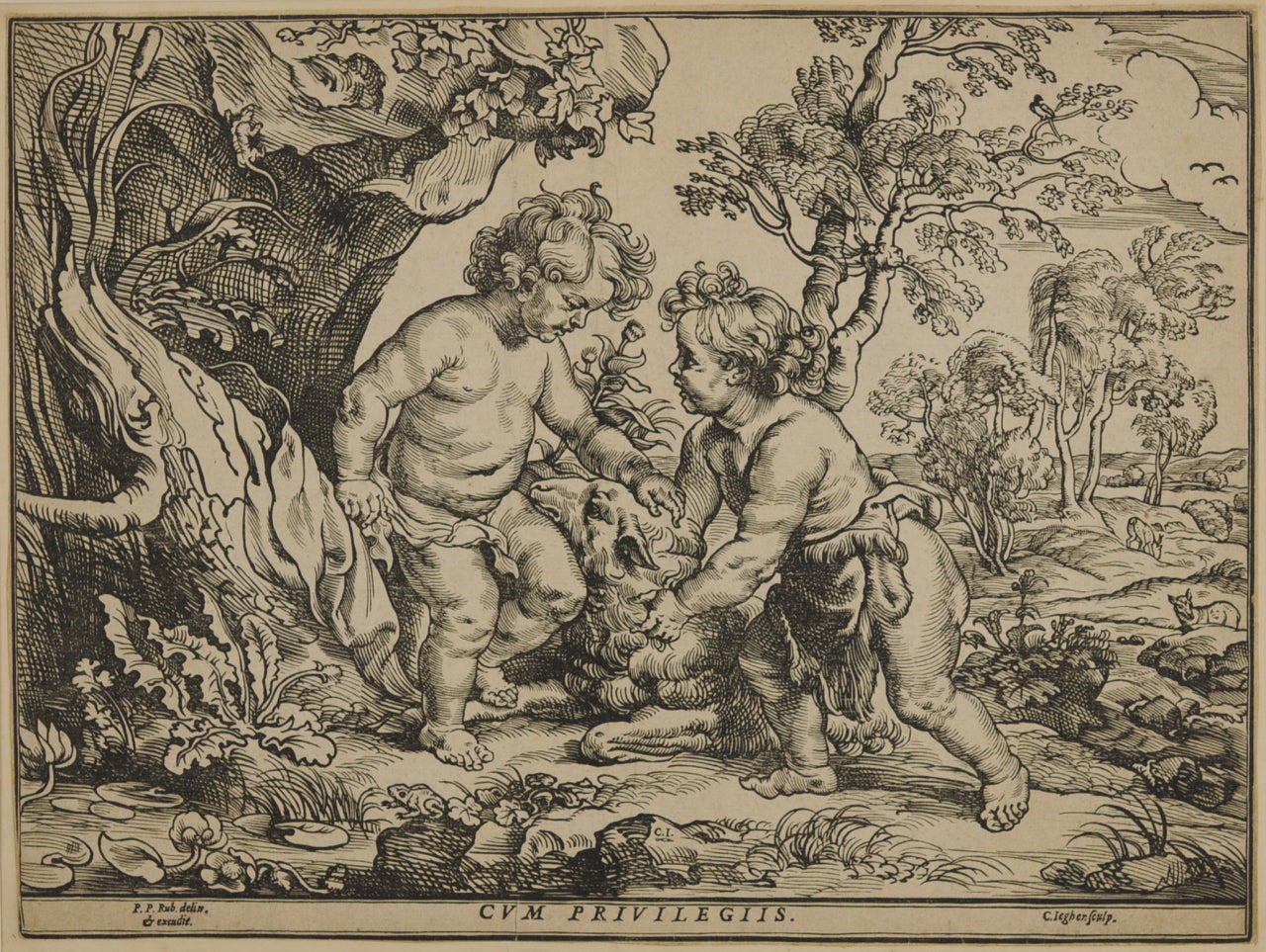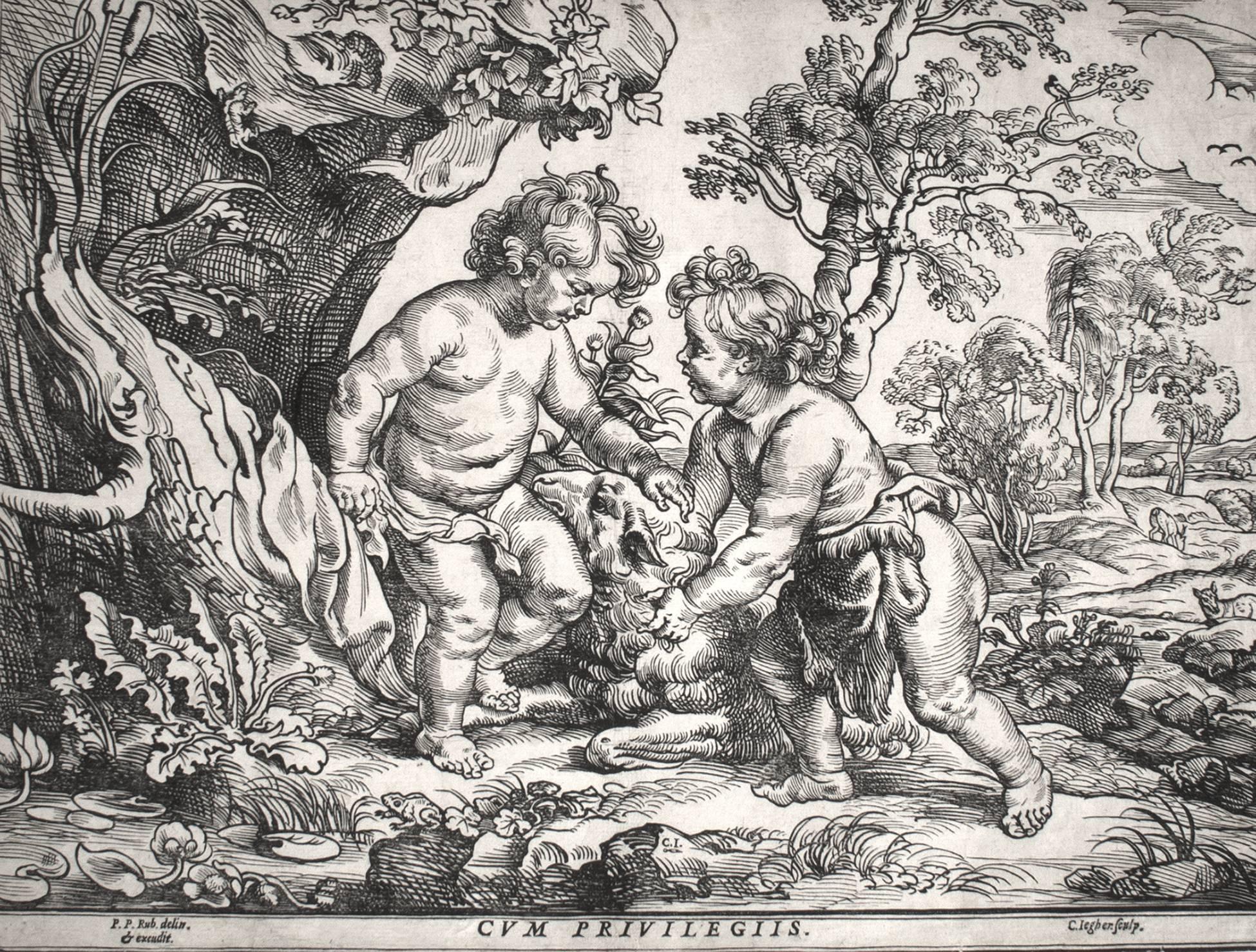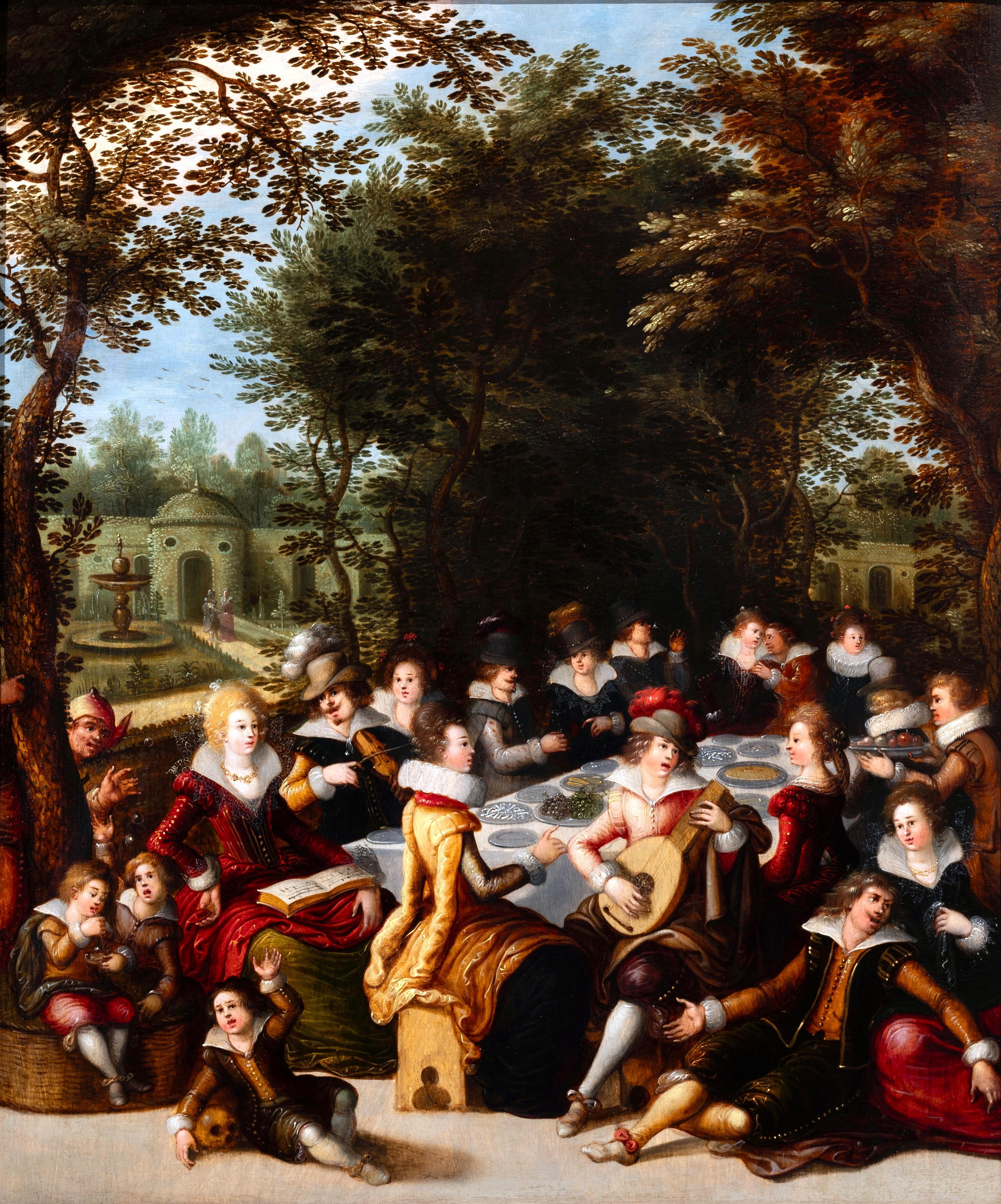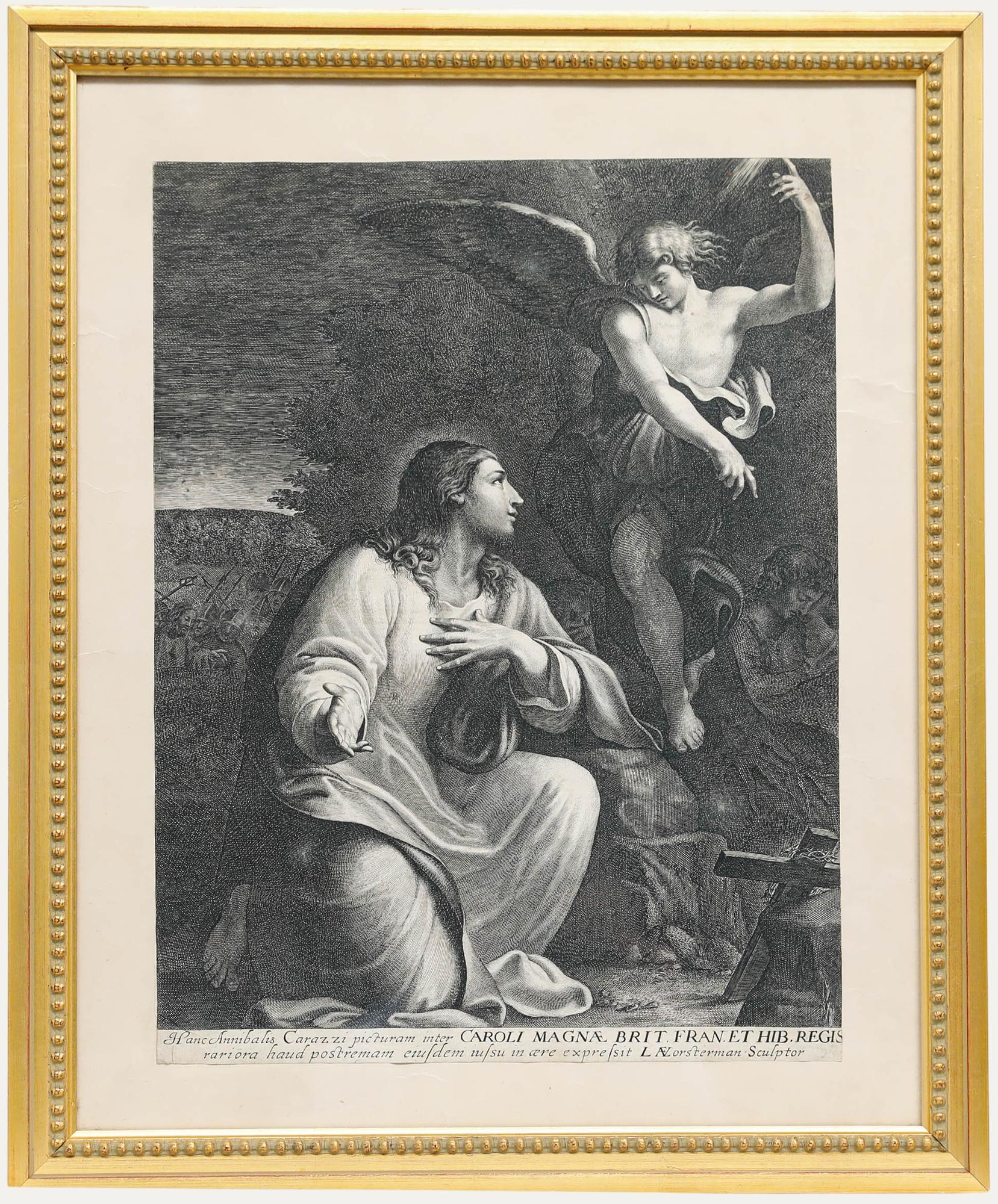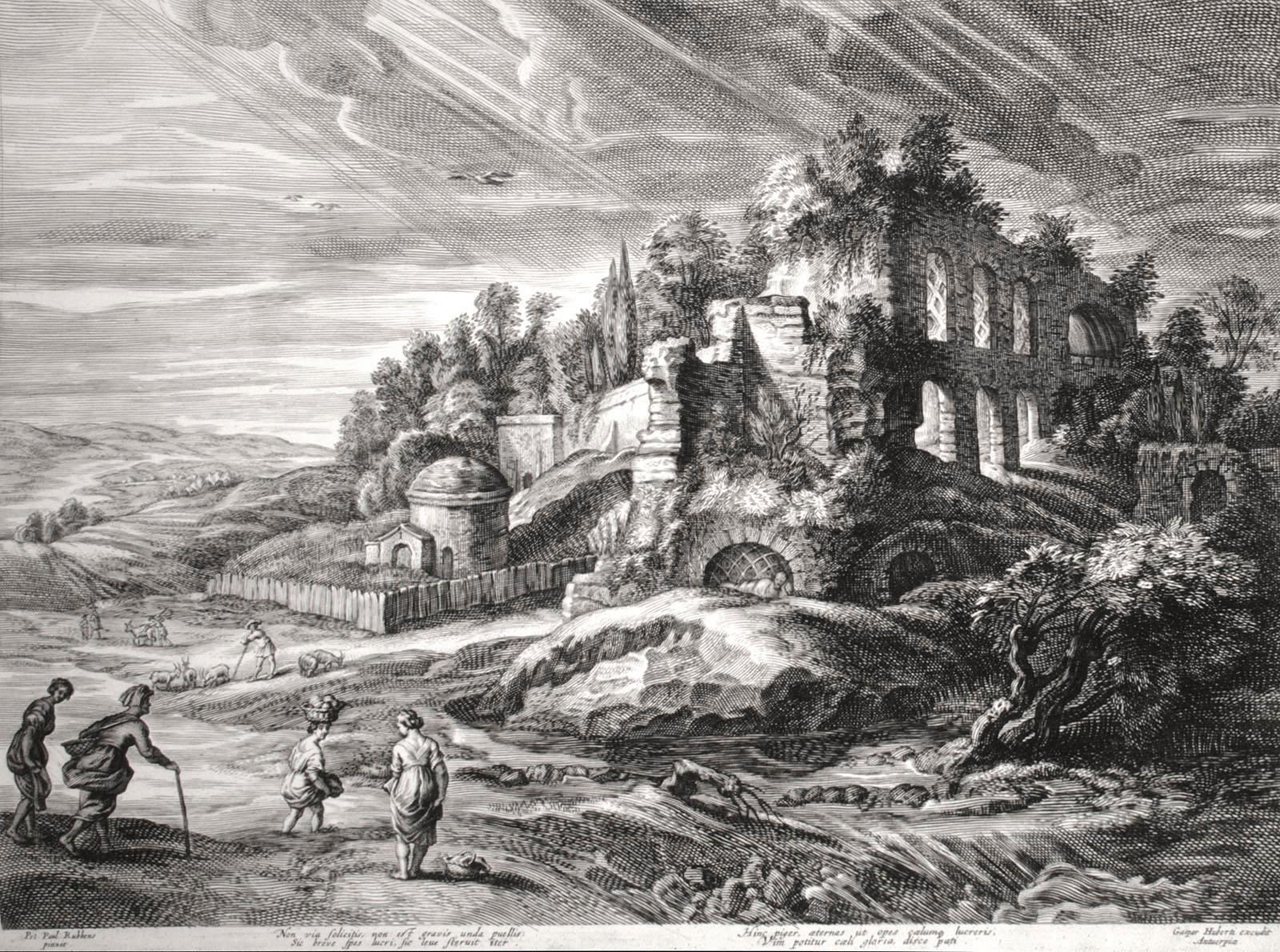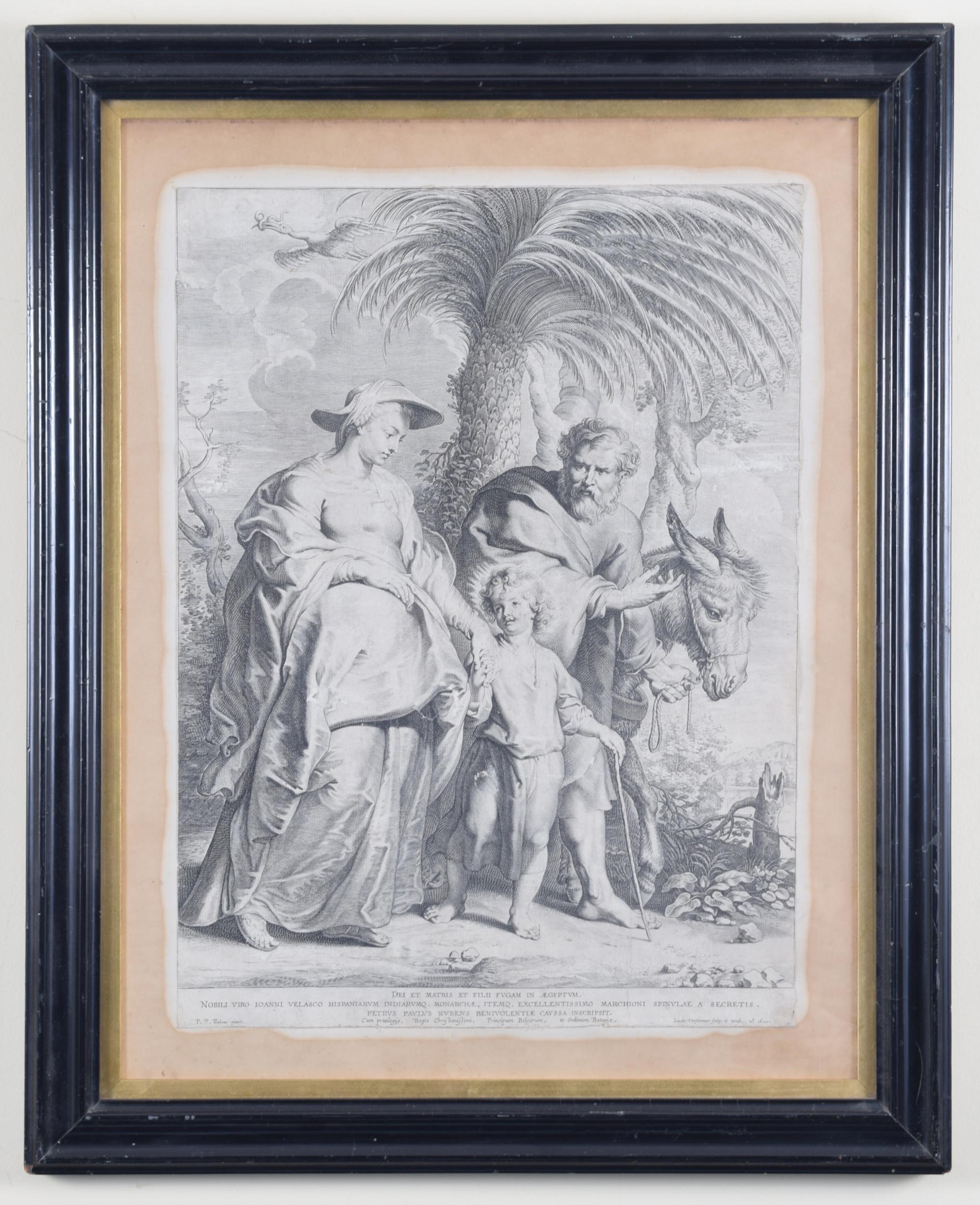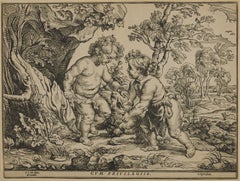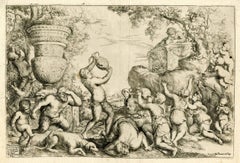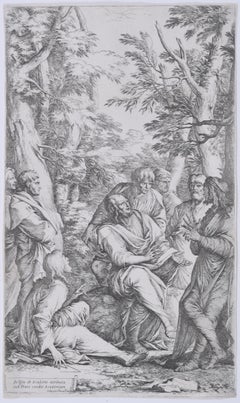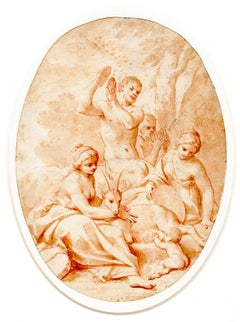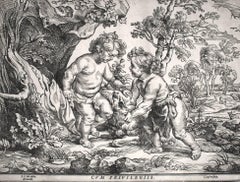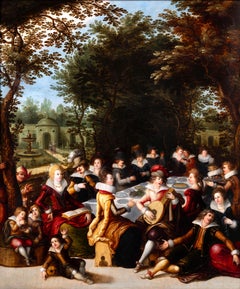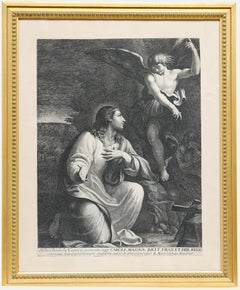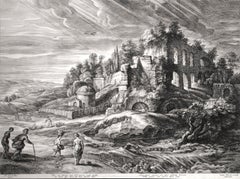Items Similar to The Garden of Love (after Peter Paul Rubens [1577-1640]
Want more images or videos?
Request additional images or videos from the seller
1 of 19
Christoffel JegherThe Garden of Love (after Peter Paul Rubens [1577-1640]c. 1633-1636
c. 1633-1636
$25,000
£18,866.81
€21,599.65
CA$35,258.29
A$38,709.20
CHF 20,194.67
MX$468,435.26
NOK 253,108.89
SEK 238,495.13
DKK 161,235.61
About the Item
The Garden of Love (after Peter Paul Rubens [1577-1640])
Woodcut diptych, c. 1633-1636
Each of the two sheets is signed in the plate lower right
A posthumous impression with tiny worm whole in the block. Most proably late 17th century/early 18th century impression.
Extremely rare in any impressioon. The MMA impression is missing the right edge of the right sheet from top to bottom (see MMA catalog illustration).
A brilliant early impression was in the Laube Collection, Switzerland. That is the best impression that I have seen to date. Most impressions have condition issue like this pair of sheets.
The diptych is illustrated as the cover illustration for both the MMA Bulletin and the Courtald Collection Rubens catalog (see photos of both). It is discussed and illustrated in each catalog as well.
The composition is thought to be a number of of Rubens and hiw wife in various leisure activities.
Impressions are in the collection of the Metropolitan Museum of Art, Art Institute of Chicago, Philadelphia Museum of Art, Courtauld Gallery, London and the National Gallery of Art. The garden represents Paradise, but also fertility. This painting is an allegory and exaltation of love and marriage, as well as the merry company.
Provenance:
Swedish Royal Family
References And Exhibitions:
Fitzwilliam Museum, Rubens and Printmaking (Cambridge, England: Fitzwilliam Museum, 1990), nos. 36, 37, pp. 25-26, reproduced p. 26; detail reproduced in color on cover.
Courtauld Institute, Rubens Paintings, Drawings, Prints in the Princes Gate Collection Courtault Institute Galleries (London: University of London, 1988), no. 55, p. 48, reproduced; detail reproduced title page.
Mary L. Myers, "Rubens and the Woodcuts of Christoffel Jegher," The Metropolitan Museum of Art Bulletin XXV, Number I (Summer, 1966), pp. 7-23, reproduced pp. 18-19, figures 19-20.
F. W. H. Hollstein, Dutch and Flemish Etchings, Engravings and Woodcuts 1450-1700 (Amsterdam: , 1949-2003), 17 A&B.
"Having realized the potential profits to be made from reproductive prints of his work, Rubens began to engage printmakers from 1619 onward. In the early 1630s, he turned to woodcuts in close collaboration with Christoffel Jegher. Indeed, Jegher's place in art history as the most important woodcutter of his time rests exclusively on the nine large single-page woodcuts that resulted from this collaboration.
The Garden of Love is a variation of a picture by Rubens from the 1630s (Museo del Prado, Madrid). Two drawings by Rubens (finished by Jegher; see 58.96.1,.2) served as models. The woodcuts reproduce these drawings in reverse. The drawings, and consequently the prints, transform the composition of the painting into a frieze, most notably by dividing it into two separate parts, pushing the figures to the foreground and cropping the architecture at the top. The inherent nature of the coarse woodcut medium and the effect that could be achieved with it were fully exploited, particularly in the rendering of the human form." Courtesy MMA
"Christoffel Jegher produced several large-scale woodcuts in collaboration with the Flemish painter and diplomat Peter Paul Rubens, of which this two-sheet print is the largest. The panoramic garden setting includes delights such as a group of musical enthusiasts perched on plush chairs and colonnaded ledges on the left; on the right is a fountain grotto with decorative streams of water into which the most boisterous men try to cajole their lovers. The unsure woman on the far right, her waist firmly grasped by a smooth-talking admirer, resists the necessary push into temptation from a determined, winged Eros.
Rubens was deeply involved in producing prints after his paintings, of which the most illustrious were woodcuts created from about 1632 to 1636 by Christoffel Jegher. The most ambitious of these large woodcuts is the Garden of Love, a composition inspired by the painting of this subject (now at Waddeson Manor, Buckinghamshire), dated around 1630/31. Rather than an exact reproduction of the painting, the composition was redrawn with variations by Rubens on a separate sheet as a model for the woodcut artist to follow; it was then printed by Jeghers on two nearly equal-sized sheets that function as self-contained works. Belonging to the tradition of Medieval love gardens, the right half contains portraits of Rubens and his radiant young wife, Helena Fourment, who is echoed in almost all the female faces." Courtesy AIC
- Creator:Christoffel Jegher (1596-1652/3, Dutch)
- Creation Year:c. 1633-1636
- Dimensions:Height: 18.25 in (46.36 cm)Width: 23.25 in (59.06 cm)
- Medium:
- Movement & Style:
- Period:
- Condition:
- Gallery Location:Fairlawn, OH
- Reference Number:Seller: FA1849A-B1stDibs: LU14014716322
About the Seller
5.0
Recognized Seller
These prestigious sellers are industry leaders and represent the highest echelon for item quality and design.
Platinum Seller
Premium sellers with a 4.7+ rating and 24-hour response times
Established in 1978
1stDibs seller since 2013
814 sales on 1stDibs
Typical response time: <1 hour
Associations
International Fine Print Dealers Association
- ShippingRetrieving quote...Shipping from: Fairlawn, OH
- Return Policy
Authenticity Guarantee
In the unlikely event there’s an issue with an item’s authenticity, contact us within 1 year for a full refund. DetailsMoney-Back Guarantee
If your item is not as described, is damaged in transit, or does not arrive, contact us within 7 days for a full refund. Details24-Hour Cancellation
You have a 24-hour grace period in which to reconsider your purchase, with no questions asked.Vetted Professional Sellers
Our world-class sellers must adhere to strict standards for service and quality, maintaining the integrity of our listings.Price-Match Guarantee
If you find that a seller listed the same item for a lower price elsewhere, we’ll match it.Trusted Global Delivery
Our best-in-class carrier network provides specialized shipping options worldwide, including custom delivery.More From This Seller
View AllThe Infant Christ and St. John Playing with the Lamb, after Peter Paul Rubens
By Christoffel Jegher
Located in Fairlawn, OH
The Infant Christ and St. John Playing with the Lamb,
after Peter Paul Rubens (1577-1640)
Woodcut, trimmed and tipped to support
Initialed in the block bottom ...
Category
1630s Old Masters Prints and Multiples
Materials
Woodcut
Bacchanal
By Giovanni Andrea Podestà
Located in Fairlawn, OH
Bacchanal
Etching, 1649
Inscribed in the square left: "Magnificentis/simo Principi/Paolo lorda/no. II Bracci/ani Duci/Aud. P.DDD/1640; Inscribed on right: Rome apud Franciscsum Saluucium
Condition: Usual centerfolds from paper manufacture
Plate: 10 3/8 x 15 1/2"
Sheet: 11 1/2 x 16 1/2";
References:
Bartsch XX.4
Sopher Plate 145
An impression of this image is in the collections of the Philadelphia Museum of Art and the National Gallery of Art, Washington
An exceptionally rich impression in excellent condition.
From Wikipedia, the free encyclopedia
Putti as Allegory of Music
Giovanni Andrea Podestà or Giovanni Andrea Podesta (1608 - c. 1674) was an Italian painter and engraver who was principally active in Rome. His principal subject matter is children playing in landscapes with classical objects. His works show the influence of Poussin's Arcadian landscapes and bacchanals, which were ultimately derived from Titian's bacchanals.
Life
Giovanni Andrea Podestà was born in Genoa. He was formed in Genoa with Giovanni Andrea de Ferrari and Domenico Fiasella according to the information provided by the contemporary Genoese biographer Raffaele Soprani. He is also recorded as an apprentice of Giovanni Battista Paggi in 1627.
His presence is documented from in 1634 in Rome where he made drawings after the statues and ancient reliefs at the famous Giustiniani collection. These were subsequently engraved for publication in the 'Galleria Giustiniani'. The artist's career ran a course similar to that of the young Domenico Fiasella. In Rome his art evolved in contact with the works of Poussin, Andrea di Leone, Pietro Testa...
Category
17th Century Old Masters Figurative Prints
Materials
Etching
The Academy of Plato Plato and His Disciples
By Salvator Rosa
Located in Fairlawn, OH
The Academy of Plato
Plato and His Disciples
Etching and drypoint
c. 1662, printed c. 1710
Signed in the plate lower left
Inscribed lower left: 'In villa ab Academo attributa sua[m]...
Category
1660s Old Masters Figurative Prints
Materials
Etching
The Infant Jupiter Nursing from the She-Goat Amaltheia (The Birth of Jupiter)
By Luigi Quaini
Located in Fairlawn, OH
The Infant Jupiter Nursing from the She-Goat Amaltheia
(The Birth of Jupiter)
Red chalk and wash on off-white paper, c. 1700
Unsigned
Attribuuted to Quaini by Dwight Miller, the sch...
Category
18th Century and Earlier Baroque Figurative Drawings and Watercolors
Materials
Chalk
Sextus Tarquinius Raping Lucretia
By Georg Pencz
Located in Fairlawn, OH
Sextus Tarquinius Raping Lucretia
Engraving, c. 1546-47
Signed with the intials in the plate (see photo)
From: "Four Scenes of Early Roman History"
An early impression with plate ton...
Category
16th Century Old Masters Figurative Prints
Materials
Engraving
The Death of Lazarus
By Hieronymus Wierix
Located in Fairlawn, OH
The Death of Lazarus
Engraving, 1593
Feria VI. Post Domin IIII
From: Evangelicae Historiae Imagines, Plate 76
Condition: Excellent
Sheet size: 9 7/8 x 6 1/8 inches
Reference: Referen...
Category
16th Century Old Masters Figurative Prints
Materials
Engraving
You May Also Like
Christ and the Little Saint John Playing with the Lamb (2nd State)
By Christoffel Jegher
Located in Chicago, IL
Woodcut after Peter Paul Rubens (Siegen 1577 - 1640 Antwerp)
337 x 451 mm.; 13 1/4 x 17 3/4 inches
Provenance:
The Metropolitan Museum of Art, New York, Duplicate stamp on verso...
Category
17th Century Baroque Figurative Prints
Materials
Woodcut
Feast in the Garden of Love, 17th century Antwerp, Louis de Caullery
Located in PARIS, FR
Louis de Caullery (1582-1621)
Antwerp School early 17th century
Oil on oak panel
Dimensions: h. 51 cm (20.08 in), w. 43 cm (16.93 in)
Ebonized wooden frame
Framed: h. 67 cm (26.38 in...
Category
Early 17th Century Old Masters Figurative Paintings
Materials
Oil, Wood Panel
After Annibale Carracci (1560-1609) - 1627 Engraving, The Agony in the Garden
Located in Corsham, GB
A 17th century engraving by Lucas Vorsterman I (1595-1675) after 'The Agony in the Garden' by Annibale Carracci (1560-1609). According to the lettering, this plate was made at the co...
Category
Early 18th Century Figurative Prints
Materials
Engraving
Landscape with Roman Ruins
By (After) Peter Paul Rubens
Located in Chicago, IL
Engraving after Peter Paul Rubens (Siegen 1577 - 1640 Antwerp), executed by Schelte Adams Bolswert (Bolsward c. 1586 -1659 Antwerp).
Bolswert was one of the major printmakers in the ...
Category
17th Century Old Masters Landscape Prints
Materials
Engraving
The Flight into Egypt 17th century engraving after Rubens by Lucas Vorsterman
By Peter Paul Rubens
Located in London, GB
To see more, scroll down to "More from this Seller" and below it click on "See all from this Seller."
Lucas Vorsterman (1595 - 1675) after Peter Paul Rubens (1577 - 1640)
The Fligh...
Category
1620s Realist Landscape Prints
Materials
Engraving
Flora with her Nymphs, after Giulio Romano
Located in New York, NY
GIULIO BONASONE (1510-1576) AFTER GIULIO ROMANO (CIRCA1499-1546)
Flora with her Nymphs
engraving, circa1531-50, on laid paper, watermark Two crossed Arro...
Category
16th Century Old Masters Figurative Prints
Materials
Engraving
More Ways To Browse
P And P Chair Company
Royal Provenance
Antique Reproduction Paintings
Engravings 1700
Kaws Urge
Keith Haring Safe Sex
Le Carmen Des Carmen
Leo Jacobs
Leroy Neiman Signed Serigraphs
Les Cavaliers Dali
Les Vitraux
Love Me Kulig
Magritte Poster
Marc Chagall 1974
Marc Chagall Cote Azur
Marc Chagall King David
Marc Chagall Metropolitan Opera Poster
Matisse Nadia
